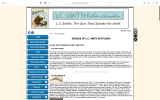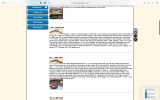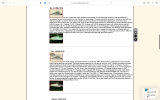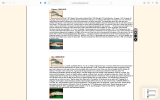vette447
AH enthusiast
- Joined
- Jun 25, 2013
- Messages
- 498
- Reaction score
- 800
- Location
- Oklahoma USA
- Media
- 128
- Member of
- SCI, DSC
- Hunted
- USA (AK,CO,NM,WY,TX,KS,OK), Namibia, South Africa, Zimbabwe, Argentina, France
I bought this gun awhile back in a group of guns and always thought it was very nice but I really don’t need it. I am not an LC Smith expert but from the research I have done, this appears to be a very nice example of a pre-1913 No 3 grade gun. It has a very attractive amount of remaining case colors on the receiver (which were hard to capture in the photograph) and beautiful wood grain in the stock. It is engraved with game scenes including a pair of snipe in the oval on the right lockplate and quail in a game scene oval on the left lockplate. It features 30” nitro steel barrels choked full/full with a single extractor and a gold bead foresight. The LOP is 14” to the front trigger and it weighs 7.4 lbs.
It locks up tight and the bores are beautiful and shiny and mechanics are excellent. It has obviously been well cared for. The only “knocks” that I see on it are a little superficial nick in the top of the right barrel and a small chip out of the stock behind the right lock plate. The nick in the barrel is just cosmetic, probably from bumping something coming out of the safe, and does not transfer through into the bore at all.
From the LC Smith Collector Association website regarding the Grade 3:
No. 3 (1894-1912)
The 1900 catalog reported that the No. 3 grade with: "Nitro Steel barrels is considered by many to be the finest medium-grade on the market. This grade always pleases as in it we give so much of value." Usually, this grade had ducks (right lock plate) and quail (left lock plate) engraved in ovals, rather than in circles, as found on the No. 2 shotguns. No extra handwork was done on the inside of the locks. Barrels were either a "fine quality" of Chain Damascus (8, 10, 12, and 16 gauges) or Nitro Steel (12, 16, and 20 gauges). As with many of the other grades, production of 20 gauge shotguns began in 1907. Records indicate that three 8 gauge, 51 10 gauge, 2,592 12 gauge, 253 16 gauge, and 143 20 gauge guns were made. Barrel lengths were advertised to be 32, 30, and 28 inches. The barrel extension was stamped HUNTER ARMS CO. FULTON, N.Y. Stocks were made from English walnut in straight or pistol grip. The 1900 L.C. Smith catalog notes: "Purchasing gun stocks in very large quantities as we do makes it possible for us to give something choice even in the No. 3 grade. We are always careful to give as choice a color and figure as possible." Lightweights were available with the 12 gauge weighing 6 pounds and 12 ounces and the 16 gauge weighing 6 pounds and 8 ounces. A total of 3,042 No. 3 guns were made, and 2,432 had automatic ejectors. It was priced at $100 in 1892 and $90 in 1912.
Price is $3,000 plus actual shipping to your FFL (please make sure your FFL will accept shipments from an individual). I can accept cashier’s checks for payment.
Please PM or email me with any questions or if you wish to see additional pictures. Thanks!














It locks up tight and the bores are beautiful and shiny and mechanics are excellent. It has obviously been well cared for. The only “knocks” that I see on it are a little superficial nick in the top of the right barrel and a small chip out of the stock behind the right lock plate. The nick in the barrel is just cosmetic, probably from bumping something coming out of the safe, and does not transfer through into the bore at all.
From the LC Smith Collector Association website regarding the Grade 3:
No. 3 (1894-1912)
The 1900 catalog reported that the No. 3 grade with: "Nitro Steel barrels is considered by many to be the finest medium-grade on the market. This grade always pleases as in it we give so much of value." Usually, this grade had ducks (right lock plate) and quail (left lock plate) engraved in ovals, rather than in circles, as found on the No. 2 shotguns. No extra handwork was done on the inside of the locks. Barrels were either a "fine quality" of Chain Damascus (8, 10, 12, and 16 gauges) or Nitro Steel (12, 16, and 20 gauges). As with many of the other grades, production of 20 gauge shotguns began in 1907. Records indicate that three 8 gauge, 51 10 gauge, 2,592 12 gauge, 253 16 gauge, and 143 20 gauge guns were made. Barrel lengths were advertised to be 32, 30, and 28 inches. The barrel extension was stamped HUNTER ARMS CO. FULTON, N.Y. Stocks were made from English walnut in straight or pistol grip. The 1900 L.C. Smith catalog notes: "Purchasing gun stocks in very large quantities as we do makes it possible for us to give something choice even in the No. 3 grade. We are always careful to give as choice a color and figure as possible." Lightweights were available with the 12 gauge weighing 6 pounds and 12 ounces and the 16 gauge weighing 6 pounds and 8 ounces. A total of 3,042 No. 3 guns were made, and 2,432 had automatic ejectors. It was priced at $100 in 1892 and $90 in 1912.
Price is $3,000 plus actual shipping to your FFL (please make sure your FFL will accept shipments from an individual). I can accept cashier’s checks for payment.
Please PM or email me with any questions or if you wish to see additional pictures. Thanks!




